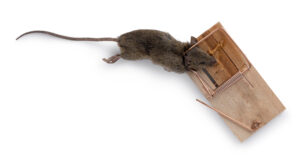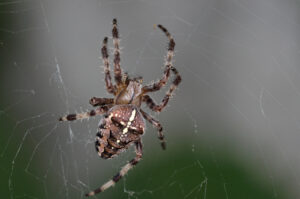The rodent population includes species such as rats and mice.
Rodents, besides causing diseases through droppings and fleas, which they leave on surfaces, can cause significant structural damage.
The damage can be in the form of gnawing wood framing and electrical wires.
However, the main problem comes from the reduced visual appeal brought about by rodent droppings and urine, which stains surfaces.
While most people panic and turn to professional extermination, rodent pest control can also be addressed through DIY.
For your consideration and awareness, this article delves into the detailed process of controlling and eradicating rodent populations.
Inspection and Assessment

Let us help you catch that mouse!
The objective of this process step is to determine the population size, route and magnitude of damage the rodents have caused. This process step entails thoroughly inspecting the property for signs of rodents, entry and exit points, and the amount of structural and other forms of damage. It is detrimental to settling for the most suitable extermination method. In most instances, rodents invade dark and hidden spaces such as attics, basements, storerooms, and kitchens. Gnaw marks, urine spots, nest debris, and droppings make up some of the things to check when looking for rodents. Damaged food items and urine stains are the other signs that indicate rodent infestation in houses. As you do this, remember to establish entry and exit routes such as vents, cracks, vents, and holes.
Species Identification
The species identification step is also part of the preparation needed for effective rodent extermination. Being able to tell specific species is crucial to understanding its behavior and anatomy, all of which play a critical role in proper extermination. To do this, observe the color, and appearance of droppings. Feeding habits and nesting areas can aid you in the determination of what kind of infestation you are facing between rats and mice. However, in most cases, mice, even though they may invade the house, feed on crumbs and leftovers then retreat to their nests outdoors.
Sanitation and Exclusion
Having identified the kind of rodent infestation you are facing, their entry points, and their behavior, it is now time to commence the extermination process. It begins with installing sanitation measures to render the areas uncomfortable to rodents. This entails clearing leftover crumbs and spills and preserving food in tightly closed containers. Garbage containers are the main source of nourishment for rodents so remember to remove waste bags more often. As you do that, ensure the containers have solid lids to keep rodents off. Then go ahead and close or block rodent entry routes by sealing holes, installing wire mesh on vents and repairing all cracks where rodents pass.
Population Reduction
The rodent reduction process entails installing traps or baits around entry routes and those that have high rodent populations. Live, snap traps, and glue traps are the various options you can consider in reducing these populations. After installation, remember to inspect the traps often to discard the trapped rodents. Rodenticides used alongside the baits should be refiled regularly. You should also check the baits regularly for any baited rodents and discard them accordingly before they start decaying and causing mayhem around the house.
Monitoring and Maintenance
Rodent reduction practices are not enough to address the problem completely. It has to be followed by regular inspections and maintenance of reduction methods. Rodents always have a habit of coming back if the control techniques are not properly maintained. In that understanding, inspect for recurrent rodent infestation, refill the rodenticides on baits and service the traps. At the same time, always maintain the highest levels of sanitation to make the areas unpleasant for the populations.
Documentation
Since it is easy to forget to monitor and maintain reduction methods effectively, you can document the eradication and preventative methods used. Documentation helps you to follow the maintenance schedule faithfully and monitor the progress. The records will also play a crucial role in future should the infestation recur. You can easily tell what methods, rodenticides, and preventative practices worked and which ones failed.
Awareness and Prevention
One aspect that often goes overlooked by many homeowners is creating awareness and educating family members on rodent infestation. With that understanding, do not just conduct the extermination alone. Instead, involve all family members in the process so that they have a better understanding of the same and help you in preventing a recurrence.
By following the above-detailed process, you can easily get rid of rodents from your house for good. However, should you do all these things and the problem persists, consider involving professional services.




